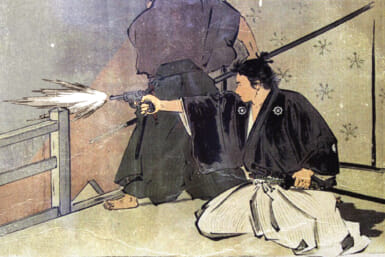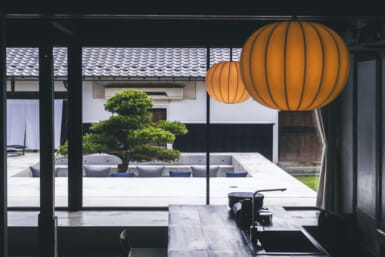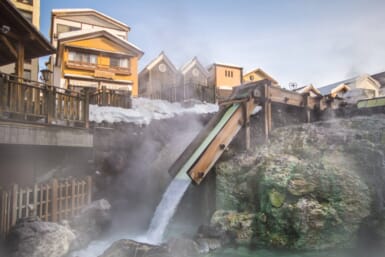Well, it’s been a while since the first edition of Japan for Kids hit the bookstores back in the spring of 1992. That book, co-authored by Jeanne Huey and me, was a culmination of three years of research by two American moms living in Tokyo who had never written anything before. In 1989, when Jeanne and I made the decision to write JFK, we had four kids under 5 between the two of us (Jeanne had her third the year the book came out). During many afternoons hanging out together in the neighborhood playground, we came to the conclusion that a comprehensive family guidebook about Japan would be invaluable to parents like ourselves, and perhaps we should be the ones to write it.
In shopping the book’s concept around, Jeanne and I were fortunate to meet Barry Lancet, an editor at Kodansha International and himself the father of young children. Barry immediately took a liking to our proposal and shared our enthusiasm for the project. He then introduced us to Hilary Sager, a sharp-eyed British editor, who proceeded to steer us toward our vision of a book called Japan for Kids.
Jeanne and I soon found out that the idea of writing our book was much more fun that the actual experience of collecting all the data that we needed for JFK. The first two years are a blur of making endless phone calls (in my very broken Japanese) and visiting so many parks, zoos and aquariums with the kids that they started to complain, “Oh no, Mom. Not another zoo!” I do remember our work area vividly however. There was no “office” space in either of our homes, so we turned a small walk-in closet in Jeanne’s house into our office. It was really tiny, with enough room for just one TV tray-type table, one chair, and our computer. (I hadn’t learned how to use the computer yet, but that’s another story.) Because of the tight quarters, only one of us could sit at the desk at a time, and the other sat on the floor, sometimes for many, many hours. It was usually me on the floor, nursing my youngest, while the rest of our brood tore up the two rooms we allowed them to take over in Jeanne’s house. I also remember ordering lots of pizza and whatever take-out we could get delivered.
Jeanne and I divided the chapters and tried to work our way through the book. There was just so much information we wanted to cover: travel tips, shopping, childbirth, education, healthcare, festivals, talent agencies, not to mention museums, zoos, parks and aquariums. Finally one day Jeanne got tired of trying to transcribe my notes that were scribbled on numerous bits of paper in longhand. She said, “Either learn to type and use the damn computer or I’m not writing this book with you.” So by the next week I had figured out how to use a computer and the work started to go a bit faster.
Just when we thought we were almost done (there were only four chapters left to complete out of 14) my family got transferred back to the U.S. for a six-month period. I dragged my boxes of research with me and continued to write as best I could with a couple of toddlers underfoot. Jeanne and I finally turned in the manuscript exactly two years after we had first approached Barry.
Imagine our surprise when we found out that there was something called “rewrites” that authors are often required to do. “But we’re finished!” we whined, and Barry and Hilary had no mercy as they forced us to recheck, rewrite and revise each chapter endlessly. The additional work on JFK took another eight months during which time Jeanne got pregnant and wasn’t feeling so great. By now I had returned to Japan with my family, and it was with tremendous relief that Jeanne and I turned in the completed version of JFK in early 1992.
I’ll never forget the thrill of walking in a bookstore (I think it was at National Azabu) that April and seeing a stack of our books right at the check-out counter. My kids were jumping up and down, screaming, “It’s our book! We wrote a book!” to everyone in the whole store.
From the beginning, it was because of our children and for our children that Jeanne and I decided to take the plunge and try to be writers. Kennedy, Kane, Michelena, Nathan, and later Gabriel la, were the world’s best research assistants; there’s no doubt that there wouldn’t have been a Japan for Kids without their inspiration and cheerful (for the most part!) participation. ,
And now for the rest of the story…. Jeanne’s family was transferred back to the U.S. in the summer of 1992, just after the book came out. She eventually went back to law school (graduated second in her class!) and is now an attorney in Dallas specializing in corporate defense.
I stayed on in Japan until 1995 when I started dividing my time between Tokyo and the Washington, D.C., area. One day in 1996 I was having lunch with Barry Lancet when he broke the news that it was time to start working on the new Japan for Kids, a major revision of our book. Initially I felt that there was no way I could rewrite JFK from the U.S. and surely without Jeanne’s help; she was quite busy with her three kids and a corporate law practice.
Before I knew it I was collecting new JFK data, and the book seemed to be rewriting itself. Through my network of friends here, I was constantly receiving e-mails with the information I needed. From time to time I put out a plea for help in this column and was so grateful for the responses. On visits to Japan over the next two years, I’d lock myself in a room with a phone for days at a time trying to fact-check every single item in all 313 pages. My children, older now, and a little more self sufficient, were a big help with ideas for the tweens and teens age group.
By mid-1999, I was beginning to feel like I would never finish what was turning out to be a huge project. The revisions numbered in the thousands and there was so much new stuff still to add. At the finish line, Patrick Newell and many other friends encouraged me to push through to the end, but I never could have kept my spirits up without their invaluable support and encouragement.
So now there is a New Japan for Kids, a labor of love that lasted far beyond my time in Tokyo, but that is filled with even more information that just might make life a little easier for families living or traveling in Japan. Look for NJFK—all 400 pages of it!— in the bookstores on Apr. 21. It’s got the same logo, but the cover is pink!









